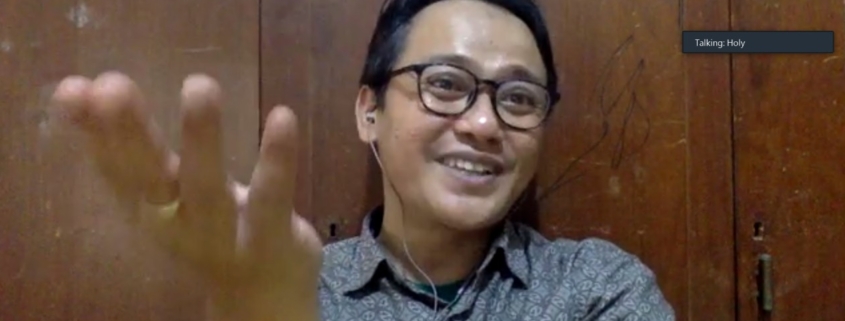Let’s Be Critical: Learn Critical Discourse Analysis from Holy Rafika
So far, there have been many misunderstandings in the practice of media analysis. For example, many students consider critical discourse analysis (CDA) to only analyze at the textual level. It is as if discourse analysis cannot read everything outside the text. However, many things affect the text.
CDA is not enough with textual dimension analysis. “So you have to also talk about conditions outside the text/producer/social action: conditions that affect producers (history of the text, etc.),” said Holy Rafika Dhona, UII Communications Lecturer, who became an instructor in the Advanced Journalism Training/PJTL HIMMAH UII on 16 September 2021, noon. HIMMAH is a university-level Student Press Institution/LPM within the Indonesian Islamic University (UII).
CDA always connects the dimensions of the text, social action with context. CDA also combines the historical-power-ideological extent because it is based on the PHI (power-history-ideology) principle. Therefore, said Holy, CDA is not only done by conducting linguistic analysis.
What is an example?
“The discourse, for example, about the Breksi Cliff tourist spot, changed something that was originally just an ordinary cliff into a place for good photos. It was a process of changing discourse,” said Holy.
Holy added, according to Fairclough, discourse is the way people produce and interpret texts in social interactions, which are also influenced by the broader social environment, namely social institutions, and society. “That’s why Fairclough said that behind language is ideology or politics,” he added.
Media discourse, therefore, according to Norman Fairclough, CDA is not only text analysis but also connects context (production texts and consumption texts) and sociocultural practices (talking about history and others). . Because they are all intertwined.
This is where it is essential to understand what critical theory is. The critical theory includes three things according to Max Horkheimer (1937), namely: (1) theory that sees reality is never neutral, (2) theory that sees reality is always historical, (3) theory that does not separate praxis.
The value of a critique, said Holy, briefly is (1) Power of power: where there is power, there are the oppressed and oppressors, then the second is (2) dialectical, and (3) 3. Historical. Therefore, students must be able to understand critical thinking. The critical way of thinking is to see that something is not neutral and shaped by history.




